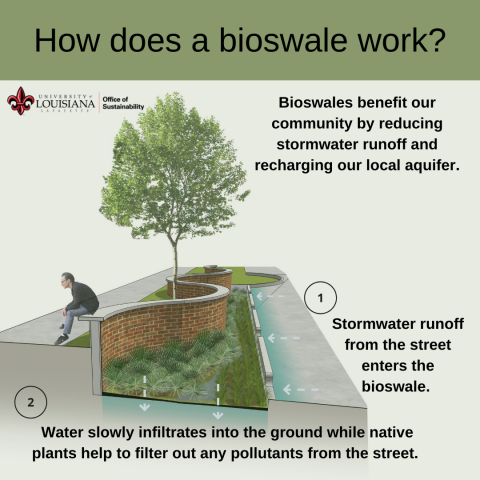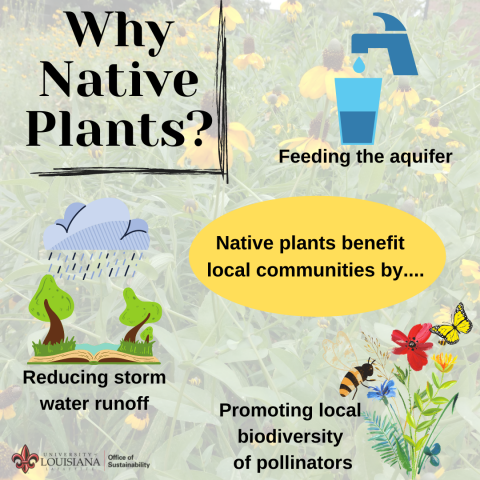Why we love green infrastructure and native plants
Green infrastructure is a key aspect of the campus stormwater master plan.
According to the EPA, Section 502 of the Clean Water Act defines green infrastructure as "...the range of measures that use plant or soil systems, permeable pavement or other permeable surfaces or substrates, stormwater harvest and reuse, or landscaping to store, infiltrate, or evapotranspirate stormwater and reduce flows to sewer systems or to surface waters."
Green infrastructure is a cost-effective, resilient approach to managing wet weather impacts that provides many community benefits. While single-purpose gray stormwater infrastructure—conventional piped drainage and water treatment systems—is designed to move urban stormwater away from the built environment, green infrastructure reduces and treats stormwater at its source while delivering environmental, social, and economic benefits.
Two major elements of green infrastructure implementation are bioswales and the use of native plants.
Bioswales work to reduce storm water runoff by capturing the overflow of rainwater from streets and sidewalks. The captured rainwater gets filtered out by vegetation which helps to remove pollutants. The clean water is then able to infiltrate deep into the ground and help recharge our aquifers.

Native plants are adapted to the local climate and soil conditions where they naturally occur. This means they can naturally withstand our hot Louisiana summers and large rain events. Unlike turf grasses, native plant root systems can run deep down into our clay soils. These long roots help us by capturing rainwater, reducing local flooding, and preventing erosion by holding soils together. Even more, once this rainwater is captured, these long root systems provide a path for the rainwater to recharge our aquifers. But we are not the only ones who benefit from native plants. Restoring local native plant habitats is crucial to preserving our areas unique biodiversity. Birds and insects rely on native plants to help them sustain their populations.

written by Sherry Pinell, School of Geosciences, Soil and Water Conservation
